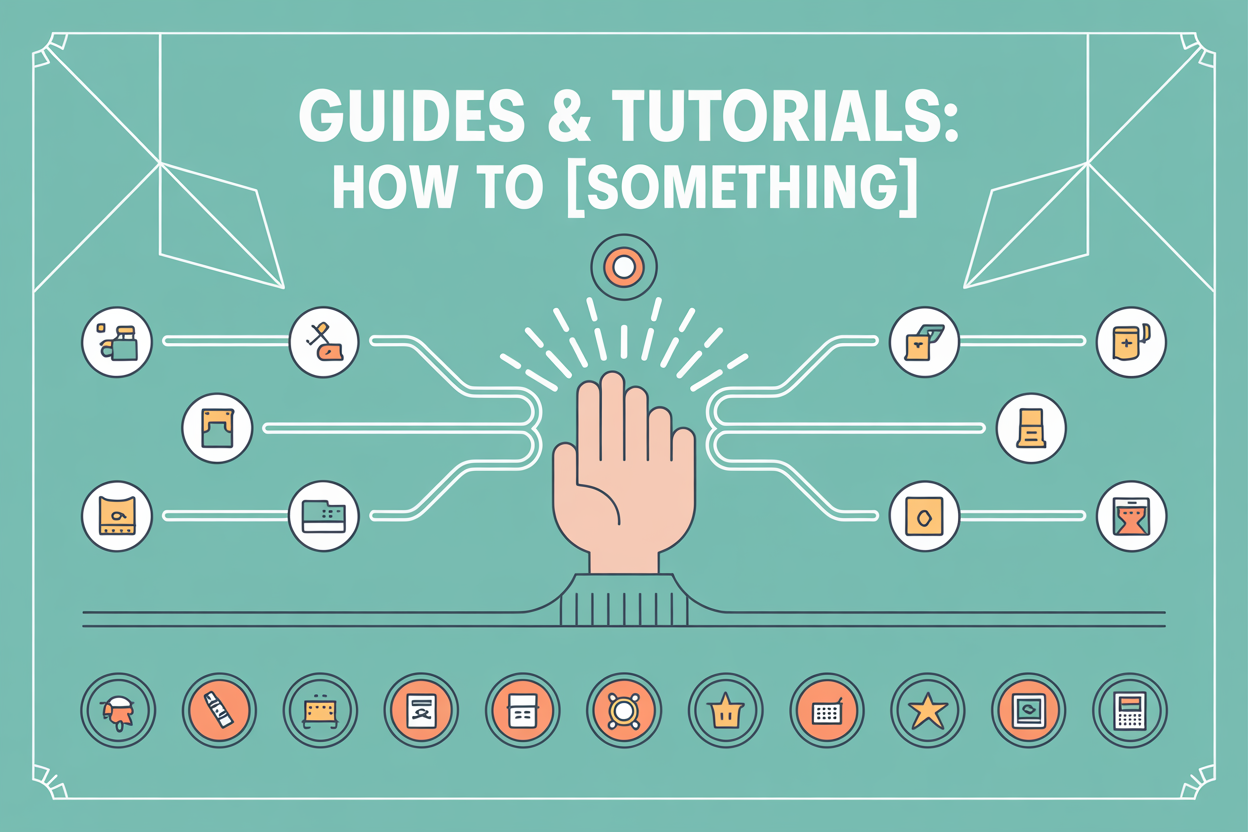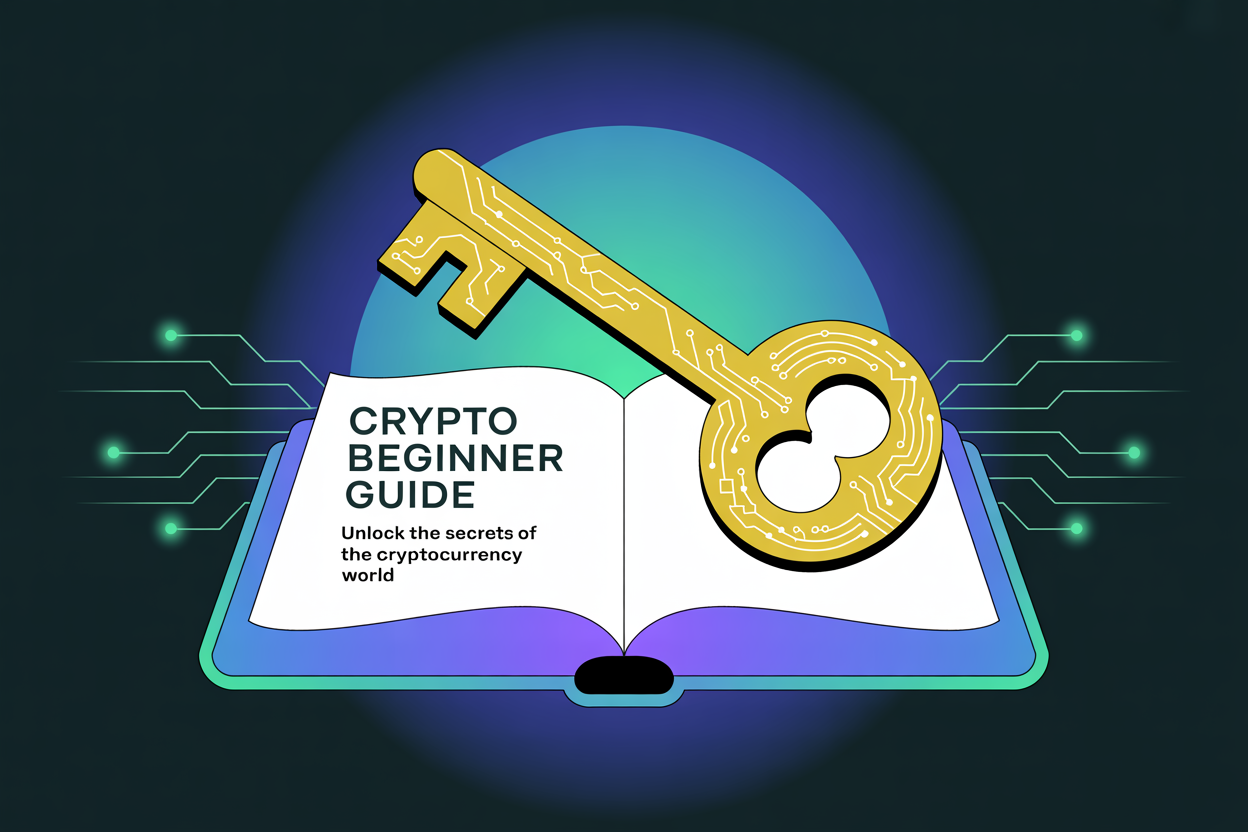Now Reading: Guides & Tutorials: How to [Do Something]
- 01
Guides & Tutorials: How to [Do Something]
Guides & Tutorials: How to [Do Something]

Learning new skills can seem overwhelming. But, with the right step-by-step tutorials, it becomes easy. In today’s fast world, clear guides are key for growth.

Looking to boost your career or learn a new hobby? Effective guides and tutorials can help you reach your goals. For those new to cryptocurrency, starting right is essential. Our guide on how to start investing in cryptocurrencies is a great place to begin.
Key Takeaways
- Step-by-step tutorials simplify complex topics.
- Clear guides enhance learning and retention.
- Effective tutorials are crucial for personal and professional growth.
- Mastering new skills can improve career prospects.
- Learning new skills can be achieved with the right resources.
Understanding the Learning Process
Learning is more than just picking up new things. It’s about understanding how our brains work when we learn. To get good at something new, we need to know the science behind it.
The Science Behind Skill Acquisition
Our brains are amazing at changing and adapting. This is called neuroplasticity. It lets our brains make new connections and learn new things, no matter how old we get.
Neuroplasticity and Learning
Neuroplasticity helps our brains handle new challenges. When we learn something new, our brain makes new paths. This makes us better at it over time.
The Role of Myelin in Skill Development
Myelin is a fatty stuff that wraps around our nerve fibers. It’s key for getting better at things. The more we do something, the more myelin builds up. This makes our brain signals faster and more accurate.
The Four Stages of Competence Model
The Four Stages of Competence Model helps us see how we grow from not knowing to being an expert. The stages are:
- Unconscious Incompetence: Not knowing what you don’t know.
- Conscious Incompetence: Knowing you don’t know something.
- Conscious Competence: Doing something with effort.
- Unconscious Competence: Doing something without thinking.
Setting Realistic Expectations
Knowing how we learn helps us set the right goals. It’s important to remember that learning takes time. Guides and tutorials can help us stay on track and keep going.
Assessing Your Current Knowledge Level
Knowing what you already know is the first step to making a personalized learning plan. It’s key to learning well and getting better at skills.
Self-Assessment Techniques
There are many self-assessment techniques to check your knowledge level. You can try quizzes, write in a journal, or make a skills list. For example, online quizzes can show how much you know about a subject. Writing down your thoughts can help you see what you’re good at and what you need to work on.
Identifying Knowledge Gaps
After checking what you know, find out what you don’t. This means comparing what you know now to what you want to know. Use instructional guides and beginner’s tutorials to spot where you need to get better.
Creating a Personalized Learning Roadmap
Now that you know what you need to learn, make a personalized learning roadmap. Set clear goals and plan out how to reach them. Your roadmap should have a schedule and list of resources for each step, helping you learn in a methodical way.
Essential Tools and Resources for Learning
Learning to become an expert is easier with the right tools and resources. Today, we have many materials and platforms that make learning better. They help us grow and understand more.
Digital Learning Platforms
Digital platforms have changed how we learn. They offer advanced guides and tutorial resources right at our fingertips. These platforms make learning flexible and often tailored to each person.
Online Courses and MOOCs
Online courses and MOOCs are getting more popular. They give us structured learning paths in many subjects. Sites like Coursera, Udemy, and edX let us learn from experts.
Interactive Learning Software
Interactive software makes learning fun with hands-on activities and feedback. Tools like Duolingo for languages and Khan Academy for various subjects make learning fun and effective.

Physical Resources and Materials
Even though digital resources are handy, physical materials are still important. Textbooks, notebooks, and educational tools offer a hands-on experience. This can be very helpful for some learners.
Community and Mentorship Options
Learning is better with community support and mentorship. Joining study groups or finding a mentor can give us motivation and guidance. Online forums and local centers are great places to find these opportunities.
Using these essential tools and resources, we can build a supportive learning environment. This environment helps us grow and understand more.
Creating an Effective Learning Environment
To learn better, you need to make your surroundings great. A good learning space helps you learn more and faster.
Physical Space Optimization
Make your study area comfy and clean. Good lighting and a comfy chair are key. They help you stay focused, even when watching tutorial videos.
Digital Environment Setup
Your digital space is just as important. Keep your computer files neat and use tools to stay productive. A stable internet lets you easily find online resources, like tutorial videos.
Minimizing Distractions
Stay focused by avoiding distractions. Turn off phone alerts and use site blockers. A quiet study area helps you focus on learning, like watching tutorial videos.
By improving your study area and cutting distractions, you’ll learn better. This makes your learning time more productive and enjoyable.
Developing a Strategic Learning Plan
Making a strategic learning plan is key to reaching your learning goals. A good plan guides your learning, keeps you focused, and boosts your motivation.
Setting SMART Learning Goals
First, set SMART (Specific, Measurable, Achievable, Relevant, Time-bound) learning goals. This makes sure your goals are clear and can be reached within a set time.
- Specific: Clearly define what you want to achieve.
- Measurable: Quantify your goals so you can track progress.
- Achievable: Ensure your goals are realistic based on your current commitments.
- Relevant: Align your goals with your broader learning objectives.
- Time-bound: Set deadlines to maintain momentum.
Breaking Down Complex Skills
Complex skills can feel overwhelming. But breaking them down into smaller parts makes learning easier. This involves:
Task Analysis Methods
Find the main parts of the skill you want to learn and analyze each task.
Skill Decomposition Techniques
Split the skill into smaller sub-skills. Create a step-by-step guide to help you learn.
Creating a Realistic Timeline
After breaking down the skills, make a realistic timeline for your learning goals. Set milestones and deadlines that are challenging but doable.
Scheduling Regular Practice Sessions
Being consistent is crucial for learning. Plan regular practice sessions to reinforce your learning and make steady progress.
- Determine how often to practice based on your goals.
- Find a routine that fits your life, so you can stick to it.
- Check and adjust your practice schedule as needed to stay on track.
By following these steps and making a detailed tutorial for yourself, you’ll be on your way to achieving your learning goals.
Guides & Tutorials: Finding and Evaluating Quality Resources
Finding good resources is key in today’s world. With so much information out there, it’s important to know how to pick the best. Guides and tutorials are everywhere, but not all are good. Learning to spot and use the best ones is crucial.
Identifying Credible Sources
Finding reliable sources is the first step. Expert guides and instructional guides from trusted places are usually better. Look for sites with a good reputation, peer-reviewed content, or expert recommendations.

Comparing Different Learning Formats
People learn in different ways. What works for one might not work for another. Think about your learning style and the topic when choosing formats.
- Learning style: Some prefer visuals, others text or interactive stuff.
- Complexity of the subject: Some topics fit better with certain formats.
Video Tutorials vs. Written Guides
Video tutorials are lively and visual. Written guides give detailed steps. Your choice depends on what you like and the subject.
Interactive vs. Passive Learning Materials
Interactive stuff like quizzes and simulations get you involved. They help you understand and remember better. Videos and text are good for basics or background info.
Curating a Personal Resource Library
It’s smart to organize your resources. You can use digital tools or keep books. A well-organized library makes it easy to find and review what you need.
Adapting Resources to Your Learning Style
Make resources fit your learning style. You might change formats or make a study plan. This way, you get the most out of what you learn.
By following these tips, you can find and use top-notch resources. This will make your learning journey better.
Implementing Effective Practice Techniques
Learning a new skill takes more than just knowing the theory. It needs consistent and effective practice. The way you practice greatly affects how fast you learn and how well you do. We’ll look at different ways to make your practice sessions better.
Deliberate Practice Methodology
Deliberate practice is a method to improve specific skills. It focuses on areas that need work and gives feedback right away.
Focused Improvement Areas
Finding out what needs improvement is key. By focusing on these areas, you can work on improving your skills. Focused practice helps you master skills faster.
Immediate Feedback Loops
Getting feedback right away is crucial. It lets you fix mistakes and build on good habits. This cycle of action, feedback, and adjustment is key for quick improvement.
Spaced Repetition Systems
Spaced repetition reviews material at longer intervals to help remember it longer. This method uses the spacing effect to improve memory and reduce forgetting.
Active vs. Passive Learning
Active learning involves directly participating, like solving problems or discussing. Passive learning, like listening to lectures, doesn’t require active participation. Active learning is better for keeping information and skills sharp.
The Pomodoro Technique for Focused Learning
The Pomodoro Technique uses 25-minute work sessions followed by a 5-minute break. This pattern keeps you focused and prevents burnout. Regular breaks help you stay productive and focused.
Using these effective practice techniques can make learning more efficient and fun. Whether you’re using advanced guides or tutorial videos, staying consistent and adjusting your methods is key.
Tracking Progress and Measuring Results
To get better at something, you need to track and measure your progress. When you use beginner’s tutorials and tutorial resources, it’s key to keep an eye on how you’re doing.
Creating Meaningful Metrics
First, you must set up meaningful metrics. These could be about finishing tasks, mastering skills, or getting better in certain areas. For example, if you’re learning a new language, you might track words learned, conversation skills, or reading comprehension.
Documentation Methods
After setting your metrics, you need to record your progress. There are a few ways to do this:
- Keeping a learning journal
- Using digital progress tracking tools
- Creating a spreadsheet to log your metrics
Learning Journals and Logs
A learning journal is a personal log for daily progress, challenges, and reflections. It helps you understand your learning journey.
Digital Progress Tracking Tools
Digital tools offer a structured way to track progress. Learning and productivity apps can help log time, set reminders, and show your progress over time.
Adjusting Goals Based on Performance
It’s important to adjust your goals based on your performance. If you’re consistently meeting targets, set higher goals. If you’re struggling, make your goals more reachable.
By regularly checking your progress and adjusting your approach, you can improve your learning and get better results.
Overcoming Common Learning Plateaus
Hitting a learning plateau can feel really tough. But knowing why it happens is the first step to getting past it. Learning plateaus happen when you don’t see progress, even when you’re trying hard. This can be due to many reasons, like bad practice habits, unclear goals, or mental blocks.
Identifying Plateau Causes
To beat a plateau, first figure out why it’s happening. Reasons include not being challenged enough, not getting enough feedback, or not learning in a way that works for you. Doing a deep self-check can help find the exact reason.
Technique Refinement Strategies
After finding the cause, it’s time to improve your learning method. This might mean trying new study materials or changing your practice routine. For example, using comprehensive tutorials or step-by-step tutorials can guide you through tough spots.
Mental Blocks and How to Address Them
Mental blocks are big hurdles in learning. They can come from fear, wanting to be perfect, or bad past experiences. To tackle these, you need to think deeply about yourself, change your mindset, and sometimes get help from others. Mindfulness and positive self-talk can really help.
When to Seek External Feedback
While checking yourself is key, sometimes you need outside help. This could be from a mentor, a friend, or a professional. Getting feedback from others can give you new ideas and help you move forward. It’s important to be open to feedback and use it to grow.
Getting past a learning plateau takes time, effort, and a willingness to change. By understanding why it happens, improving your methods, dealing with mental blocks, and asking for help when needed, you can keep moving forward.
Leveraging Technology for Accelerated Learning
Modern learners can greatly benefit from using technology to speed up their learning. By using advanced tools and platforms, they can make learning more efficient and effective.
AI-Powered Learning Tools
Artificial Intelligence (AI) has changed the way we learn. It offers personalized learning experiences. AI tools can see what you’re good at and what you need to work on. They suggest learning paths that fit you best.
This helps you use your study time wisely. You focus on improving where you need to.
Mobile Apps for On-the-Go Practice
Mobile apps let learners practice anywhere, anytime. There are many apps out there. They offer interactive content, quizzes, and games to make learning fun.
These apps are great for reinforcing new skills. They’re perfect for use during daily commutes or breaks.
Virtual Reality and Immersive Learning
Virtual Reality (VR) and immersive learning are changing how we learn complex topics. They create immersive environments. This makes learning complex information more engaging and memorable.
These technologies are especially good for subjects that need visual and interactive learning. By using these tech advancements, learners can speed up their learning. It makes learning more enjoyable and effective.
Building a Supportive Learning Community
Creating a supportive learning space is crucial for overcoming hurdles and staying focused on your goals. A strong learning community offers the motivation, resources, and support needed to reach your objectives.
Finding Study Partners and Groups
Finding the right study buddies and groups can greatly improve your learning journey. Seek out people who have similar goals and interests. You can discover study groups through:
- Social media platforms
- Online forums and discussion boards
- Local community centers or libraries
Online Communities and Forums
Online communities and forums are rich in knowledge and support. Some top choices include:
- Reddit forums dedicated to specific subjects
- Stack Exchange for technical queries
- Facebook groups focused on learning and education
These platforms connect you with a worldwide community. You can access a vast array of resources and get help when needed.
Accountability Partnerships
Accountability partnerships are a strong motivator. By teaming up with someone who has the same goals, you can:
- Work together to hit milestones
- Exchange resources and knowledge
- Offer each other support and encouragement
To make the most of accountability partnerships, plan regular meetings. Be open about your progress and any challenges you face.
Advanced Learning Techniques for Mastery
Mastery isn’t just about routine practice. It’s about using advanced learning techniques to really understand and get good at something. As you get better, you need to use smart strategies that experts use.

Teaching Others to Solidify Knowledge
Teaching others is a great way to make sure you know something well. It helps you organize your thoughts and fill in any gaps in your knowledge. When you explain things to others, you make sure you really get it yourself.
Cross-Disciplinary Learning Approaches
Cross-disciplinary learning means using ideas from one area to help understand another. It can lead to new insights and creative ideas. For example, a musician might use math to better understand rhythm.
Reverse Engineering Expert Performance
Reverse engineering means studying how experts do things to get better yourself. It’s about breaking down their techniques into two main parts:
Deconstructing Expert Workflows
Looking at how experts work can show you the steps and strategies they use. You learn about their processes, tools, and decisions.
Identifying Hidden Patterns and Principles
Experts often use patterns and principles that aren’t obvious. Finding these can help you understand things better and improve your skills.
Developing Intuition in Your Field
Intuition comes from lots of practice and seeing different situations. As you face more challenges, you learn what works and what doesn’t. This helps you make better decisions.
To improve your learning, try these strategies:
- Deliberate Practice: Focus on improving specific skills.
- Feedback Loops: Get feedback to adjust your learning.
- Mentorship: Work with a mentor to overcome tough spots.
Using these advanced learning techniques can help you learn faster and understand your field better.
Managing Learning Alongside Other Commitments
Effective time management is key to balancing learning with other life commitments. When you’re trying to learn something new, it’s essential to prioritize your tasks and manage your time wisely.
Time Management Strategies
To start, identify your most productive times of the day and schedule your learning sessions accordingly. Using step-by-step tutorials or beginner’s tutorials can help you stay on track. Consider implementing a calendar or planner specifically for your learning goals.
Integrating Practice into Daily Routines
Integrating practice into your daily routine can be as simple as dedicating 15-20 minutes a day to your new skill. You can listen to a podcast or watch a video related to your learning topic during your commute or while doing chores.
Balancing Multiple Learning Goals
When balancing multiple learning goals, prioritize your objectives and allocate your time accordingly. Focus on one goal at a time to avoid feeling overwhelmed. Use a task list or project management tool to keep track of your progress.
By implementing these strategies, you can successfully manage your learning alongside other commitments and make steady progress towards your goals.
Troubleshooting Common Learning Challenges
Learners often face specific challenges that need special solutions. These can include too much information or feeling unmotivated. It’s important to tackle these issues to keep moving forward.
Dealing with Information Overload
Information overload is a big challenge for learners. With so many advanced guides and tutorial resources out there, it’s hard to know where to begin or what to focus on.
To tackle this, learners should pick their resources carefully. Look for credible and relevant information. Identify the most important concepts, ignore the rest, and organize your study materials well.
Overcoming Motivation Dips
Motivation is key to learning. But, learners often feel unmotivated, which can slow them down.
Intrinsic vs. Extrinsic Motivation
It’s important to know the difference between intrinsic and extrinsic motivation. Intrinsic motivation comes from within, like personal interest. Extrinsic motivation comes from outside, like rewards or praise.
Creating Reward Systems
Setting up a reward system can help keep motivation up. Try setting small goals and rewarding yourself when you reach them. This uses extrinsic motivation to help your learning.
Addressing Skill-Specific Obstacles
Every skill has its own challenges. The first step is to identify these obstacles. You might need more resources or a different learning method.
When and How to Pivot Your Approach
At times, no matter how hard you try, your current method isn’t working. Knowing when to pivot or adjust your learning strategy is vital. Look at what’s working and what’s not. Be open to trying new methods or getting help from others.
From Novice to Expert: Continuing Your Learning Journey
Starting a learning journey is just the beginning. Becoming an expert takes hard work and never giving up. The guides and tutorials in this article are a good start. But, it’s crucial to keep practicing and improving your skills.
As you move forward, using instructional guides and resources is key. The strategies and techniques mentioned will help you get past challenges. They will also help you reach your learning goals.
To keep growing, look for different Guides & Tutorials that fit your learning style. Stay dedicated, and you’ll find the journey from beginner to expert is both rewarding and fulfilling.
FAQ
What are the most effective ways to find quality guides and tutorials for learning a new skill?
Look for guides and tutorials from trusted sources. This includes schools, experts, and well-known online platforms. Check out reviews and ratings to see if others found them helpful.
How do I assess my current level of knowledge in a particular subject or skill?
Start by reflecting on what you know. Identify areas where you need more knowledge. Use quizzes and tests to check your understanding.
Also, ask for feedback from teachers, friends, or mentors. This can help you see where you stand.
What are some strategies for creating an effective learning environment?
Make your learning space comfortable and free from distractions. Use good lighting and ergonomic furniture. For online learning, set up your devices to help you stay focused.
How can I stay motivated and overcome common learning challenges such as information overload or motivation dips?
Set clear, achievable goals for your learning. Break down big tasks into smaller ones. Reward yourself for reaching milestones.
To deal with too much information, focus on the most important stuff. Use spaced repetition to remember key points.
What role does practice play in the learning process, and how can I make the most of my practice sessions?
Practice is key to mastering new skills. It builds confidence and solidifies knowledge. Use focused practice and get feedback right away.
Consider using spaced repetition to help you remember better.
How can I track my progress and measure the effectiveness of my learning?
Keep track of your progress by setting meaningful goals. Use journals or digital tools to monitor your learning. Adjust your goals based on how you’re doing.
Be ready to change your approach if it’s not working.
What are some advanced learning techniques for achieving mastery in a particular subject or skill?
Teach others to deepen your own understanding. Use learning from different fields to broaden your knowledge. Study how experts do things.
Exposure to many experiences helps build intuition in your field.
How can I balance learning with other commitments, such as work or family responsibilities?
Use good time management to fit learning into your schedule. Make learning a part of your daily routine. Be flexible and adjust as needed to keep everything in balance.

















